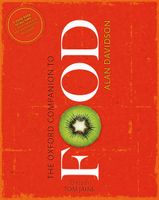Advertisement
Coconut
Appears in
Published 2014
The fruit of Cocos nucifera, the most useful tree in the world. It provides not only food and drink, but also vessels to serve them in and fuel to cook them, as well as textile fibre, thatching and basket materials, timber, medicines, chemicals, and many other valuable or useful products.
The coconut tree is a palm, usually tall, which flourishes on seashores in the moister parts of the tropics. It tolerates salty conditions and actually prefers light, sandy soil, since it needs a supply of air to its roots. This is provided by the ebb and flow of the tide lowering and raising the water table under it, so drawing air into the ground round the roots and then expelling it again. The roots are shallow, though widely spread; so the effect of strong winds is to give the palms their characteristic list. The huge leaves are often 6 m (20') long, with a massive midrib and drooping leaflets.


